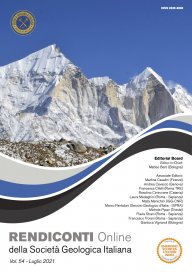

Sacred and secular aspects of Phoenicians' life at Motya (Sicily, Italy) inferred by multidisciplinary archaeobotanical analyses
Claudia Moricca (1,2)
(1) Department of Earth Sciences, Sapienza University of Rome, Piazzale Aldo Moro 5, 00185 Rome, Italy.
(2) Department of Environmental Biology, Sapienza University of Rome, Piazzale Aldo Moro 5, 00185 Rome, Italy.
Corresponding author e-mail: claudia.moricca@uniroma1.it
DOI: https://doi.org/10.3301/ROL.2021.04
Volume: 54/2021
Pages: 2-8
Abstract
The present study focuses on archaeobotanical analyses performed at the Phoenicians site of Motya, a small island (ca. 45 ha) located in the Stagnone di Marsala, in western Sicily.
The study of macro-remains focused on two closed contexts: a votive favissa by the sacred area of “Cappiddazzu”, and a disposal pit in Area D, both dating between the 8th and the 6th century BC. In the latter context, palynological analyses were also performed. The study allows to reconstruct sacred and secular aspects of human- environment interactions of Phoenicians at Motya, also providing information regarding past environment. Concerning the ritual sphere, ceremonial meals likely accompanied animal sacrifices. Food and flower offerings are also attested. Interesting is the finding of officinal plants and plants toxic to livestock. From the secular perspective, information was gathered on human diet, crop processing, import products and land exploitation. Finally, a combination of palynology and anthracology has allowed to describe the environment and highlight changes that occurred with time.
Keywords
Get Full Text